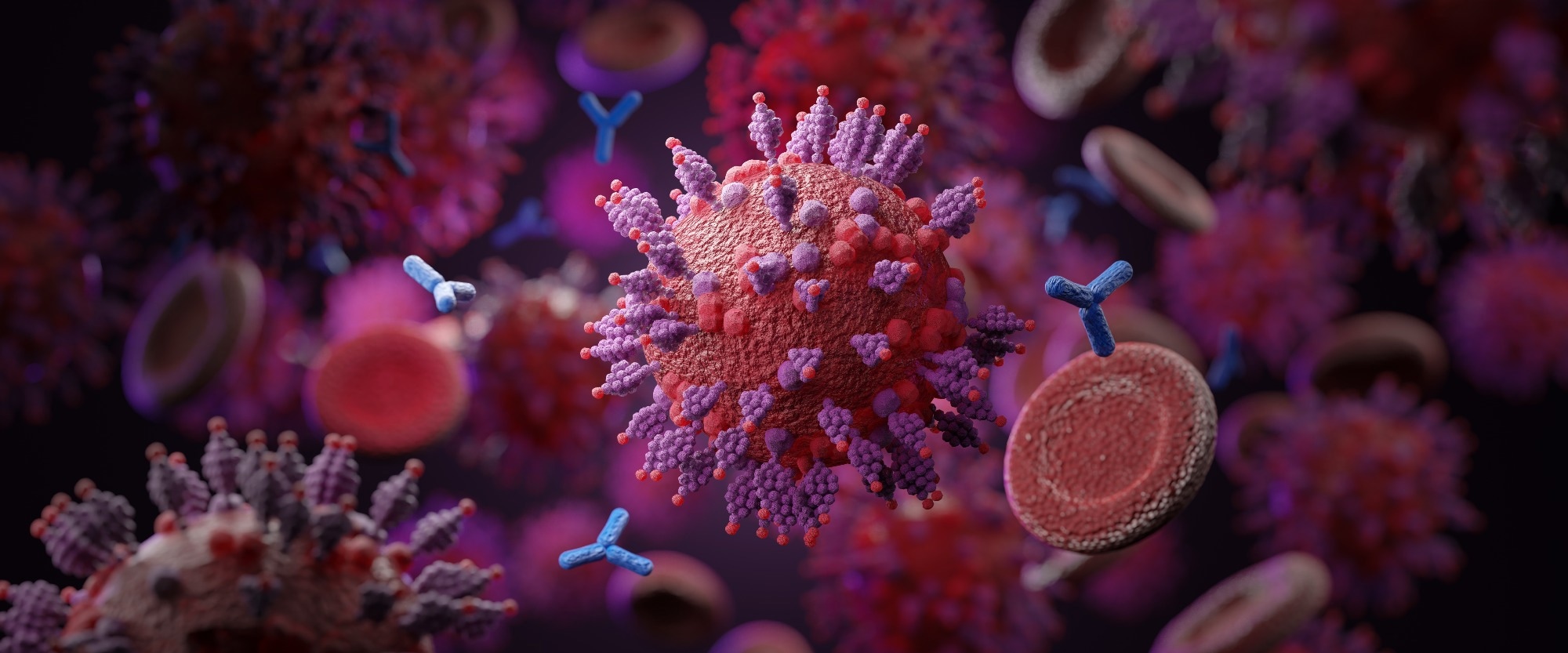In a recent study published in Eurosurveillance, researchers from Israel measured the neutralizing antibody titers against the wild-type strain of severe acute respiratory syndrome coronavirus 2 (SARS-CoV-2) and the SARS-CoV-2 Omicron subvariants BA.1, BA.2, BA.2.75 and BA.5 in healthcare workers fully vaccinated with three doses of the Comirnaty vaccine, who experienced breakthrough Omicron infections.

Background
Although the severity and associated mortality of the coronavirus disease 2019 (COVID-19) pandemic have significantly reduced due to the worldwide impetus to develop vaccines against SARS-CoV-2, emergent variants such as Omicron and its subvariants are soon gaining global dominance.
The high mutation rates in the spike proteins of the SARS-CoV-2 Omicron subvariants are resulting in increased transmissibility and immune evasion. Consequently, the number of breakthrough infections or re-infections among fully vaccinated individuals has increased.
The whole genome sequence monitoring of SARS-CoV-2 positive samples in Israel detected the introduction of the BA.2.75 subvariant in the population during the dominance of the BA.5 subvariant.
With emergent variants acquiring the ability to escape neutralizing antibodies, it is important to monitor the efficacy of vaccine-induced immunity against the newly circulating variants.
About the study
The present study used serum samples from a total of 55 healthcare workers from three cohorts to evaluate the levels of neutralizing antibody titers against the wild-type SARS-CoV-2 strain and four Omicron subvariants BA.1, BA.2, BA.2.75, and BA.5. The healthcare workers were being monitored using serological follow-ups from the onset of the pandemic.
The first cohort comprised 14 healthcare workers who were fully vaccinated with three doses of the Pfizer/BioNTech BNT162b2 messenger ribonucleic acid (mRNA) (Comirnaty) vaccine and had never had SARS-CoV-2 infections. The second cohort consisted of 15 previously uninfected healthcare workers who were fully vaccinated with three doses of the Comirnaty vaccine and had subsequently had an Omicron BA.1 breakthrough infection. The last cohort comprised previously uninfected and fully vaccinated 26 healthcare workers who had a subsequent breakthrough infection with Omicron BA.5.
The study used whole genome sequences from viral cultures of SARS-CoV-2 positive individuals to identify the wild-type strain and Omicron BA.1, BA.2, BA.2.75, and BA.5 variants. It used neutralization assays to detect the titer levels of neutralization antibodies against the wild-type SARS-CoV-2 strain and Omicron sub-variants.
Results
The results indicated higher neutralization titers against all the Omicron subvariants among the cohorts with fully vaccinated individuals with breakthrough BA.1 or BA.5 infections as compared to fully vaccinated individuals with no breakthrough SARS-CoV-2 infections.
Sera of individuals from the second cohort who were fully vaccinated and had breakthrough BA.1 infections exhibited similar neutralization efficiency against all sub-variants except BA.5, against which the neutralizing efficacy was significantly lower. The neutralizing efficacy of the sera from individuals of the third cohort, who had breakthrough BA.5 infections after being fully vaccinated, showed the reverse trend, with similar neutralization efficiency against all sub-variants except BA.1.
The BA.2.75 subvariant, which is the first second-generation SARS-CoV-2 subvariant reported from regions outside its area of origin, has nine additional novel mutations apart from the mutations reported in the Omicron subvariants. Two of the novel mutations are believed to increase the binding of the BA.2.75 spike protein to the angiotensin-converting enzyme-2 (ACE-2) receptor and the immune evasion abilities of the sub-variant. The hybrid immunity granted by complete vaccination status and breakthrough infections of BA.1 or BA.5 exhibit significant protection against BA.2.75.
Furthermore, the authors discussed another study that examined the neutralizing antibody titers against BA.4, BA.5, and BA.2.75 in individuals vaccinated with two doses of the Sinopharm BBIBP-CorV vaccine and a booster dose of the BBIBP-CorV or Anhui Zhifei Longcom Zifivax vaccine. The results from that study reported lower neutralizing efficacy against BA.4 and BA.5 compared to BA.2.75.
Conclusions
To summarize, the study examined the neutralizing antibody titers against the wild-type SARS-CoV-2 strain and the Omicron sub-variants BA.1, BA.2, BA.2.75, and BA.5 among healthcare workers in Israel who were fully vaccinated with three doses of the Comirnaty vaccine and had breakthrough infections with the Omicron BA.1 or BA.5 variant.
Compared to the vaccinated individuals with no breakthrough infections, individuals with BA.1 and BA.5 breakthrough infections exhibited similar neutralizing titers against BA.2.75. Interestingly the neutralizing titers against BA.5 in individuals with BA.1 breakthrough infections were significantly lower, and vice versa.
However, the results indicate hybrid immunity from complete vaccinations with the Comirnaty vaccine and breakthrough infections exhibit cross-reactive protection against emergent second-generation sub-variants with increased ACE-2 receptor binding and immune evasion abilities.
Journal reference:
- Atari, N., Kliker, L., Zuckerman, N., Elkader, B. A., Weiss-Ottolenghi, Y., Mendelson, E., Kreiss, Y., Regev-Yochay, G., & Mandelboim, M. (2022). Omicron BA.2.75 variant is efficiently neutralised following BA..1 and BA..5 breakthrough infection in vaccinated individuals, Israel, June to September 2022. Eurosurveillance. doi: https://doi.org/10.2807/1560-7917.es.2022.27.44.2200785 https://www.eurosurveillance.org/content/10.2807/1560-7917.ES.2022.27.44.2200785









 Add Category
Add Category

.jpg)